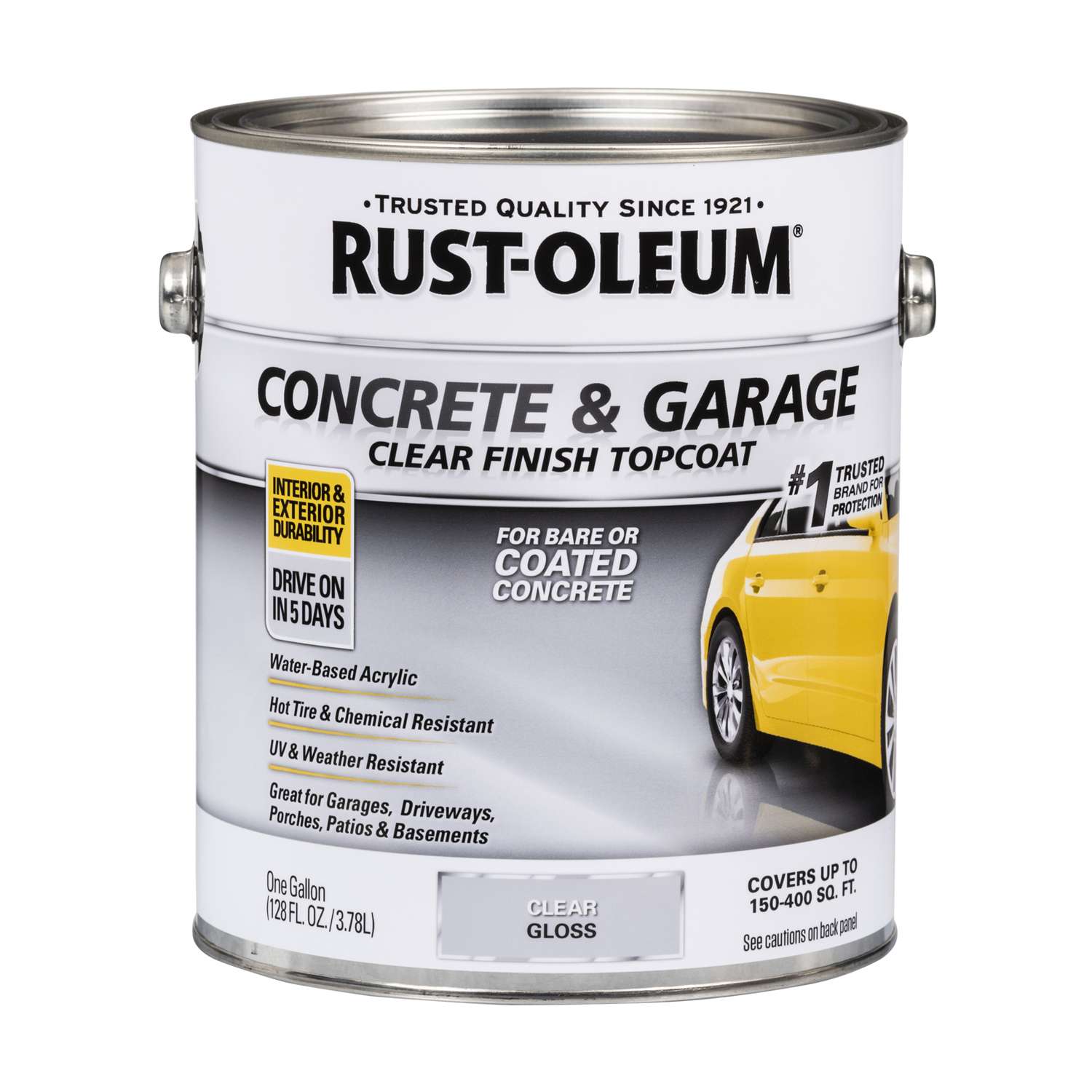Garage floor paint has become a popular choice for homeowners looking to enhance the appearance and functionality of their garages. Properly painted garage floors not only look more attractive but also offer added protection against stains, spills, and wear and tear. This article provides an in-depth look at garage floor paint, exploring its types, benefits, application process, and maintenance. Additionally, it covers common mistakes to avoid and answers frequently asked questions.
Types of Garage Floor Paint
Epoxy Paint
Epoxy paint is one of the most popular options for garage floors due to its durability and resistance to chemicals, stains, and abrasions. It consists of a two-part system: resin and hardener. When mixed, these components form a strong, adhesive bond that can withstand heavy traffic and harsh conditions.
Epoxy paint comes in various finishes, including glossy and matte, and can be tinted in a wide range of colors. This versatility allows homeowners to customize the appearance of their garage floors to match their aesthetic preferences. Additionally, epoxy can be enhanced with decorative flakes or metallic pigments for a unique look.
The application process for epoxy paint involves several steps, including surface preparation, mixing the components, and applying the paint. Proper preparation is crucial to ensure adhesion and longevity. While epoxy paint is durable, it requires careful application and curing time, which can be a few days to a week.
One of the main advantages of epoxy paint is its longevity. A properly applied epoxy coating can last for several years, making it a cost-effective solution for garage floors. However, it is essential to follow the manufacturer’s instructions and maintain the floor regularly to ensure its durability.
While epoxy paint offers many benefits, it also has some drawbacks. It can be slippery when wet, which may pose a safety hazard. Adding anti-slip additives can mitigate this risk. Additionally, epoxy paint is sensitive to UV rays and may yellow or fade if exposed to direct sunlight for extended periods.

Acrylic Paint
Acrylic paint is another popular choice for garage floors, known for its ease of application and quick drying time. It is a water-based paint that is less toxic and more environmentally friendly than solvent-based options. Acrylic paint is available in various colors and finishes, allowing for customization.
One of the main benefits of acrylic paint is its ease of use. It can be applied with standard painting tools, such as brushes, rollers, or sprayers, making it accessible for DIY enthusiasts. The quick drying time means that the garage can be used sooner after application compared to other types of paint.
Acrylic paint offers decent durability, though it is not as robust as epoxy. It is suitable for light to moderate traffic areas and can withstand occasional spills and stains. However, it may require more frequent touch-ups and reapplications in high-traffic areas.
Another advantage of acrylic paint is its flexibility. It can expand and contract with temperature changes, reducing the risk of cracking. This makes it a good choice for garages in regions with significant temperature fluctuations.
While acrylic paint has its advantages, it also has limitations. It is less resistant to chemicals and heavy abrasion compared to epoxy paint. For garages with heavy machinery or vehicles, acrylic paint may not provide adequate protection and durability.
In summary, acrylic paint is an excellent option for those seeking an easy-to-apply, quick-drying solution for their garage floors. It offers flexibility and customization but may not be suitable for heavy-duty use.
Latex Paint
Latex paint is a water-based option that is easy to apply and clean up. It is a budget-friendly choice for homeowners looking to improve the appearance of their garage floors without a significant investment. Latex paint is available in a wide range of colors and can be applied with standard painting tools.
One of the main benefits of latex paint is its ease of application. It can be applied quickly and does not require mixing or special equipment. The cleanup process is also straightforward, as latex paint can be cleaned with soap and water.
Latex paint provides a smooth finish and can be enhanced with anti-slip additives for improved safety. It dries relatively quickly, allowing for the garage to be used shortly after application. However, the durability of latex paint is lower compared to epoxy and acrylic options.
While latex paint is suitable for light traffic areas, it may not hold up well under heavy use or exposure to chemicals. It is more prone to chipping, peeling, and staining, which may require frequent maintenance and reapplication.
Another consideration is the environmental impact. Latex paint is low in VOCs (volatile organic compounds), making it a more environmentally friendly option compared to solvent-based paints. This can be an important factor for homeowners concerned about indoor air quality.
Overall, latex paint is a good choice for homeowners looking for an affordable, easy-to-apply solution for their garage floors. It is best suited for areas with light to moderate traffic and requires regular maintenance to keep it looking its best.
Urethane Paint
Urethane paint is a high-performance option known for its exceptional durability and resistance to chemicals, abrasion, and UV rays. It is often used in industrial and commercial settings but can also be an excellent choice for residential garages.
One of the key benefits of urethane paint is its resistance to yellowing and fading when exposed to sunlight. This makes it a suitable option for garages with windows or doors that let in natural light. Urethane paint maintains its appearance and protective qualities over time.
Urethane paint forms a hard, glossy surface that is easy to clean and maintain. It is highly resistant to stains and spills, making it ideal for garages used for automotive work or other messy activities. The smooth surface also prevents dust and dirt from accumulating, simplifying cleaning.
The application process for urethane paint can be more complex compared to other types. It often requires a primer and multiple coats for optimal adhesion and durability. Professional application is recommended to ensure the best results, as improper application can lead to peeling and other issues.
While urethane paint offers superior performance, it is also more expensive than other options. The higher cost is justified by its longevity and resistance to wear and tear, making it a worthwhile investment for homeowners looking for a long-lasting solution.
Urethane paint is an excellent choice for those seeking a durable, high-performance coating for their garage floors. It offers exceptional resistance to chemicals, UV rays, and abrasion, making it suitable for both residential and commercial applications.
Polyurethane Paint
Polyurethane paint is another high-performance option known for its durability and resistance to chemicals and abrasion. It is similar to urethane paint but offers additional flexibility, making it less prone to cracking and peeling.
One of the main benefits of polyurethane paint is its flexibility. It can expand and contract with temperature changes, reducing the risk of damage in environments with significant temperature fluctuations. This makes it a good choice for garages in regions with extreme weather conditions.
Polyurethane paint forms a hard, glossy surface that is resistant to stains, spills, and chemicals. It is easy to clean and maintain, making it suitable for garages used for various activities. The smooth surface also prevents dust and dirt from accumulating, simplifying cleaning.
The application process for polyurethane paint is similar to that of urethane paint and can be more complex compared to other types. It often requires a primer and multiple coats for optimal adhesion and durability. Professional application is recommended to ensure the best results.
While polyurethane paint offers superior performance, it is also more expensive than other options. The higher cost is justified by its longevity and resistance to wear and tear, making it a worthwhile investment for homeowners looking for a long-lasting solution.
Polyurethane paint is an excellent choice for those seeking a durable, high-performance coating for their garage floors. It offers exceptional resistance to chemicals, abrasion, and temperature fluctuations, making it suitable for both residential and commercial applications.

Benefits of Painting Your Garage Floor
Improved Aesthetics
Painting your garage floor can significantly improve the overall appearance of the space. A fresh coat of paint can transform a dull, dirty concrete floor into a clean, attractive surface. This can make the garage more inviting and visually appealing, especially if it is used for more than just parking vehicles.
One of the main benefits of painting your garage floor is the ability to customize the appearance. With a wide range of colors and finishes available, you can choose a look that complements the rest of your home. Whether you prefer a sleek, modern look or a more traditional style, there is a paint option to suit your taste.
In addition to color, you can also enhance the aesthetics of your garage floor with decorative flakes or metallic pigments. These additives can create a unique, textured look that adds visual interest to the space. The result is a one-of-a-kind floor that reflects your style.
A painted garage floor can also create a more cohesive and organized look. By covering up stains, cracks, and imperfections, paint can make the floor look cleaner and more uniform. This can make the entire garage appear more polished and put together.
Another benefit of improved aesthetics is the potential increase in home value. A well-maintained, attractive garage can be a selling point for potential buyers. It shows that the homeowner has taken care of the property and can make a positive impression during showings.
Painting your garage floor can greatly enhance the aesthetics of the space. With a wide range of colors, finishes, and decorative options available, you can create a customized look that complements your home and reflects your style.
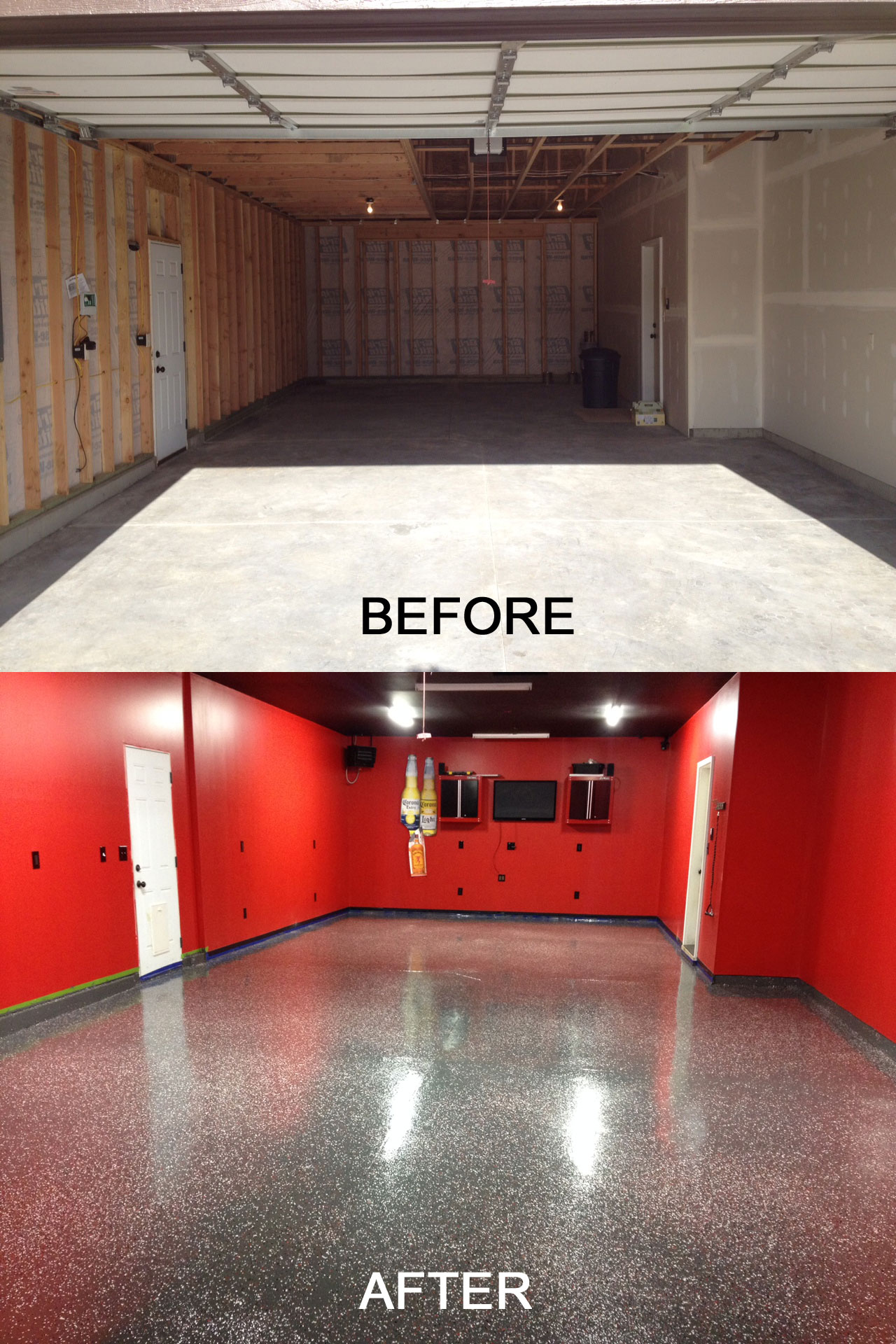
Enhanced Durability
One of the primary reasons homeowners choose to paint their garage floors is to enhance durability. Garage floors are subjected to heavy use, including vehicle traffic, spills, and impacts. A quality paint coating can provide an extra layer of protection against these stresses, extending the life of the floor.
Epoxy and urethane paints, in particular, are known for their durability. These paints form a hard, resilient surface that can withstand heavy loads and resist damage from impacts and abrasions. This makes them ideal for garages used for automotive work or other activities that involve heavy equipment.
In addition to physical durability, painted garage floors also offer resistance to chemicals and stains. This is especially important for garages where vehicles are serviced or where chemicals are stored. A quality paint coating can prevent spills from penetrating the concrete and causing long-term damage.
Another benefit of enhanced durability is the reduction of dust and dirt. Unsealed concrete floors can produce dust, which can be a nuisance and contribute to poor air quality. A painted floor seals the concrete, preventing dust from forming and making the garage easier to clean and maintain.
A painted garage floor can also resist moisture penetration, which can be particularly beneficial in areas with high humidity or where water is frequently present. Moisture can cause concrete to crack and deteriorate over time, but a quality paint coating can provide a barrier against water damage.
Painting your garage floor can significantly enhance its durability. A quality paint coating protects against physical wear, chemicals, stains, dust, and moisture, helping to extend the life of the floor and maintain its appearance.

Improved Safety
Safety is an important consideration when it comes to garage floors. Painted floors can offer several safety benefits, including improved visibility, slip resistance, and fire resistance. These factors can make the garage a safer environment for both vehicles and people.
One of the main safety benefits of painted garage floors is improved visibility. Light-colored paint or high-gloss finishes can reflect light, making the garage brighter and easier to navigate. This can help prevent accidents and injuries, especially in poorly lit garages.
Slip resistance is another important safety feature. Many garage floor paints can be enhanced with anti-slip additives, which create a textured surface that provides better traction. This can be particularly beneficial in areas prone to moisture or where spills are common, reducing the risk of slips and falls.
Some garage floor paints also offer fire-resistant properties. Epoxy and polyurethane paints, for example, can withstand high temperatures and provide a barrier against fire spread. While this does not make the floor fireproof, it can offer an added layer of protection in case of a fire.
A painted garage floor can also help with marking safety zones and pathways. Different colors or patterns can be used to designate specific areas, such as parking zones, walkways, or storage areas. This can help keep the garage organized and reduce the risk of accidents.
In addition to these benefits, a painted garage floor can also improve overall cleanliness and hygiene. A sealed surface is easier to clean and maintain, reducing the buildup of dirt, dust, and potentially harmful substances. This can contribute to a healthier environment and reduce the risk of respiratory issues.
Painting your garage floor can improve safety in several ways. Improved visibility, slip resistance, fire resistance, and the ability to mark safety zones all contribute to a safer and more functional garage.

Easier Maintenance
A painted garage floor is much easier to maintain compared to bare concrete. The sealed surface prevents dirt, dust, and stains from penetrating the floor, making cleaning and upkeep simpler and more efficient. This can save time and effort, especially in a busy household.
One of the main benefits of easier maintenance is the reduction of dust. Unsealed concrete floors can produce dust, which can settle on surfaces and contribute to poor air quality. A painted floor seals the concrete, preventing dust from forming and making the garage cleaner and healthier.
Painted garage floors are also resistant to stains and spills. Whether it’s oil, grease, or other chemicals, a quality paint coating can prevent these substances from soaking into the concrete and causing long-term damage. This makes cleaning up spills quick and easy, reducing the risk of permanent stains.
Regular maintenance of a painted garage floor typically involves sweeping or vacuuming to remove dirt and debris, followed by mopping with a mild cleaner. The smooth, sealed surface makes it easy to wipe away spills and stains without the need for harsh chemicals or scrubbing.
Another advantage of easier maintenance is the prevention of mold and mildew growth. Unsealed concrete can absorb moisture, creating an ideal environment for mold and mildew. A painted floor provides a barrier against moisture, helping to keep the garage dry and mold-free.
In addition to routine cleaning, painted garage floors may require occasional touch-ups or resealing to maintain their appearance and durability. This is typically a straightforward process and can be done as part of regular home maintenance. The ease of maintenance makes painted floors a practical choice for busy homeowners.
Painting your garage floor can make maintenance much easier. The sealed surface reduces dust, resists stains and spills, prevents mold growth, and simplifies cleaning, helping to keep the garage looking its best with minimal effort.
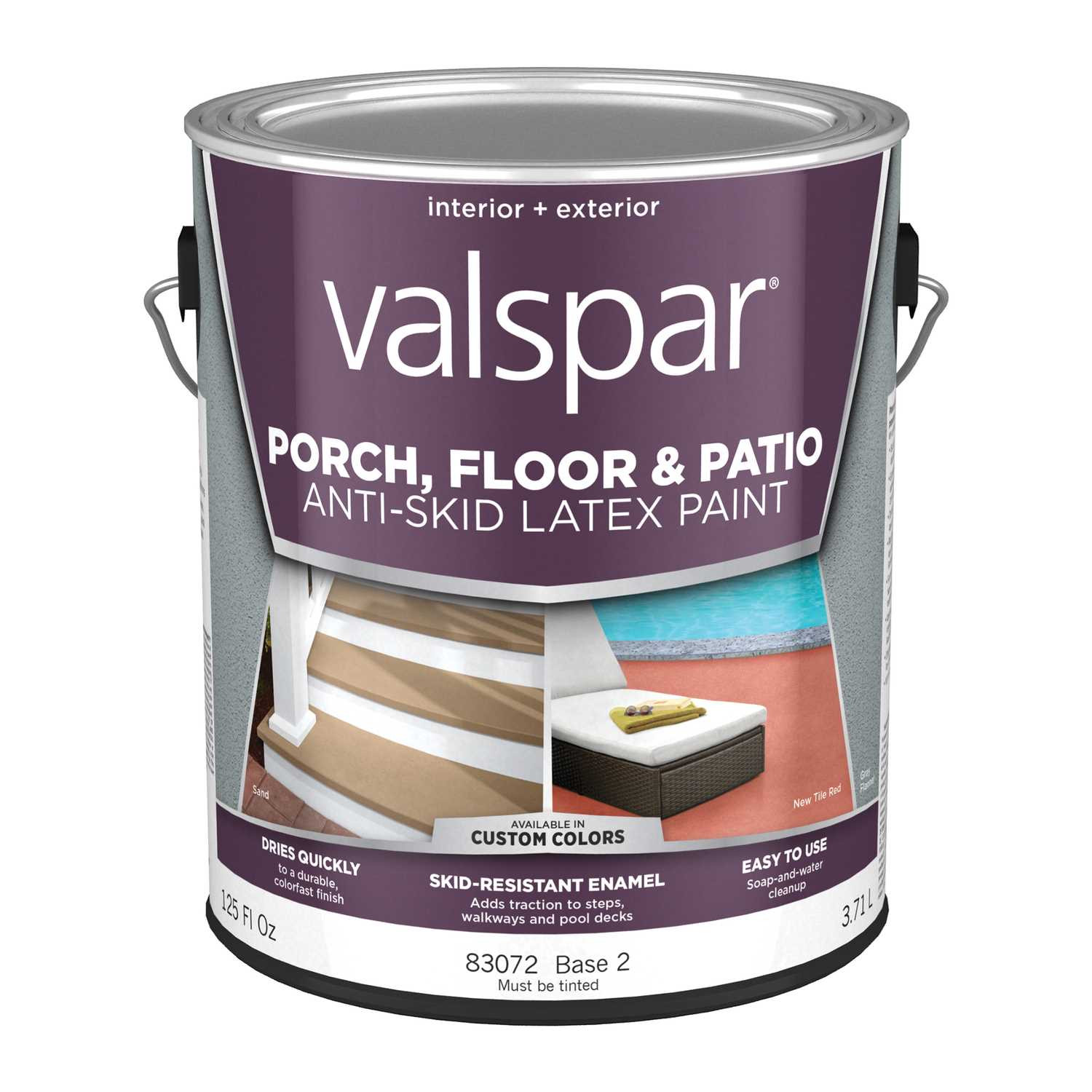
Increased Home Value
Investing in a painted garage floor can increase the overall value of your home. A well-maintained, attractive garage can be a selling point for potential buyers, demonstrating that the property has been cared for and maintained. This can make a positive impression and increase the perceived value of the home.
One of the main ways a painted garage floor increases home value is through improved aesthetics. A clean, attractive floor can enhance the overall appearance of the garage, making it a more appealing space. This can be especially important for buyers who plan to use the garage for more than just parking vehicles.
A painted garage floor also demonstrates attention to detail and pride of ownership. Potential buyers may view a well-maintained garage as an indication that the rest of the home has been cared for similarly. This can create a positive impression and increase the likelihood of a successful sale.
In addition to aesthetics, a painted garage floor offers practical benefits that can be attractive to buyers. The durability, ease of maintenance, and safety features of a painted floor can add to the overall appeal of the home. Buyers may appreciate the reduced maintenance requirements and increased functionality of a painted garage.
Another way a painted garage floor can increase home value is by enhancing the usability of the space. A clean, attractive floor can make the garage more versatile, allowing it to be used for a variety of purposes, such as a workshop, home gym, or additional storage space. This added functionality can be a selling point for potential buyers.
Painting your garage floor can increase the overall value of your home. Improved aesthetics, attention to detail, practical benefits, and enhanced usability all contribute to a more appealing and valuable property.

Environmental Benefits
Painting your garage floor can also offer environmental benefits. Many garage floor paints are formulated to be low in VOCs (volatile organic compounds), making them a more environmentally friendly option compared to traditional solvent-based paints. This can contribute to better indoor air quality and a healthier living environment.
One of the main environmental benefits of garage floor paint is the reduction of dust. Unsealed concrete floors can produce dust, which can contribute to poor indoor air quality and respiratory issues. A painted floor seals the concrete, preventing dust from forming and reducing the impact on indoor air quality.
Low-VOC paints are formulated to emit fewer harmful chemicals during application and curing. This reduces the impact on indoor air quality and makes the painting process safer for both the applicator and the occupants of the home. Choosing low-VOC or zero-VOC paints can significantly reduce the environmental impact of your project.
In addition to reducing VOC emissions, many garage floor paints are also designed to be more durable and long-lasting. This reduces the need for frequent reapplications, which can help conserve resources and reduce waste. A high-quality paint job can extend the life of the garage floor, reducing the environmental impact over time.
Another environmental benefit of painting your garage floor is the potential to reduce the heat island effect. Light-colored or reflective paint can help to reflect heat, reducing the amount of heat absorbed by the concrete. This can help to keep the garage cooler and reduce the overall energy consumption for cooling.
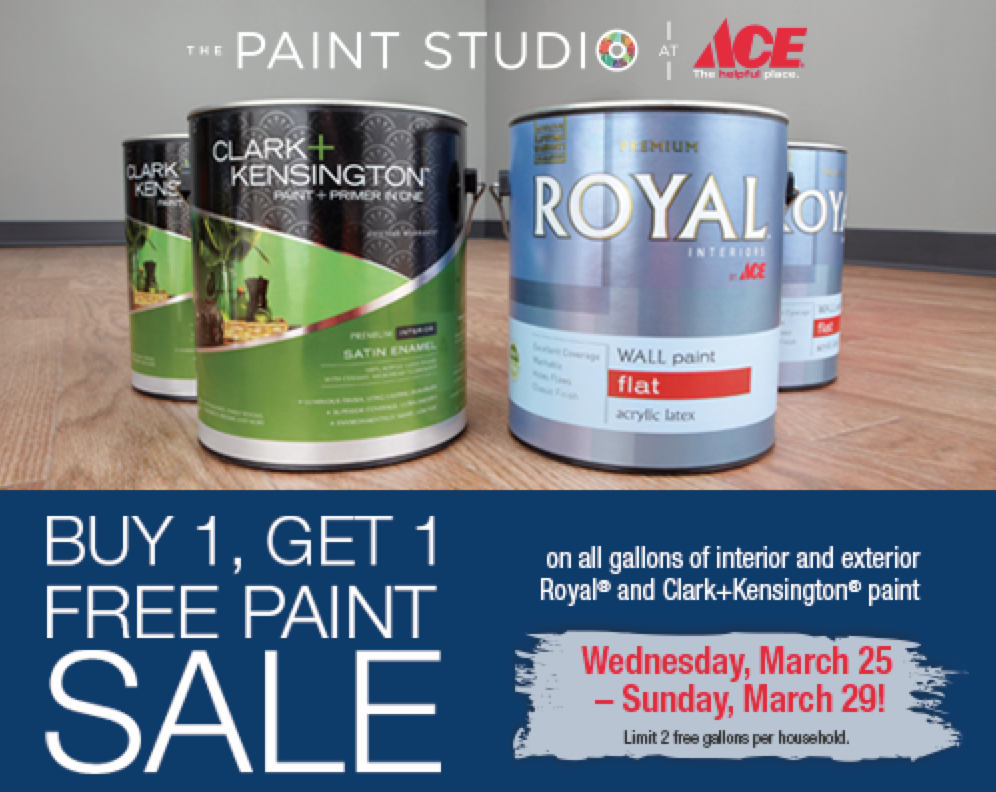
Application Process for Garage Floor Paint
Surface Preparation
Proper surface preparation is crucial for the successful application of garage floor paint. A well-prepared surface ensures better adhesion, durability, and overall performance of the paint. The first step in surface preparation is to thoroughly clean the garage floor, removing any dirt, dust, oil, and other contaminants.
Begin by sweeping or vacuuming the floor to remove loose debris. Follow this by scrubbing the floor with a degreaser or concrete cleaner to remove oil stains and other contaminants. Use a stiff brush or a pressure washer for stubborn stains. Rinse the floor thoroughly and allow it to dry completely.
Next, inspect the floor for any cracks, holes, or other imperfections. Repair any damage using a concrete patching compound or epoxy filler. Follow the manufacturer’s instructions for mixing and applying the filler, and allow it to cure fully before proceeding with the next steps.
After repairing any damage, the next step is to etch the concrete surface. Etching helps to open the pores of the concrete, allowing the paint to adhere better. Use a commercial concrete etcher or a solution of muriatic acid and water, following the manufacturer’s instructions for application and safety precautions.
Once the etching process is complete, rinse the floor thoroughly to remove any residue. Use a wet/dry vacuum or squeegee to remove excess water, and allow the floor to dry completely. The floor must be dry before applying the paint, as any moisture can interfere with adhesion.
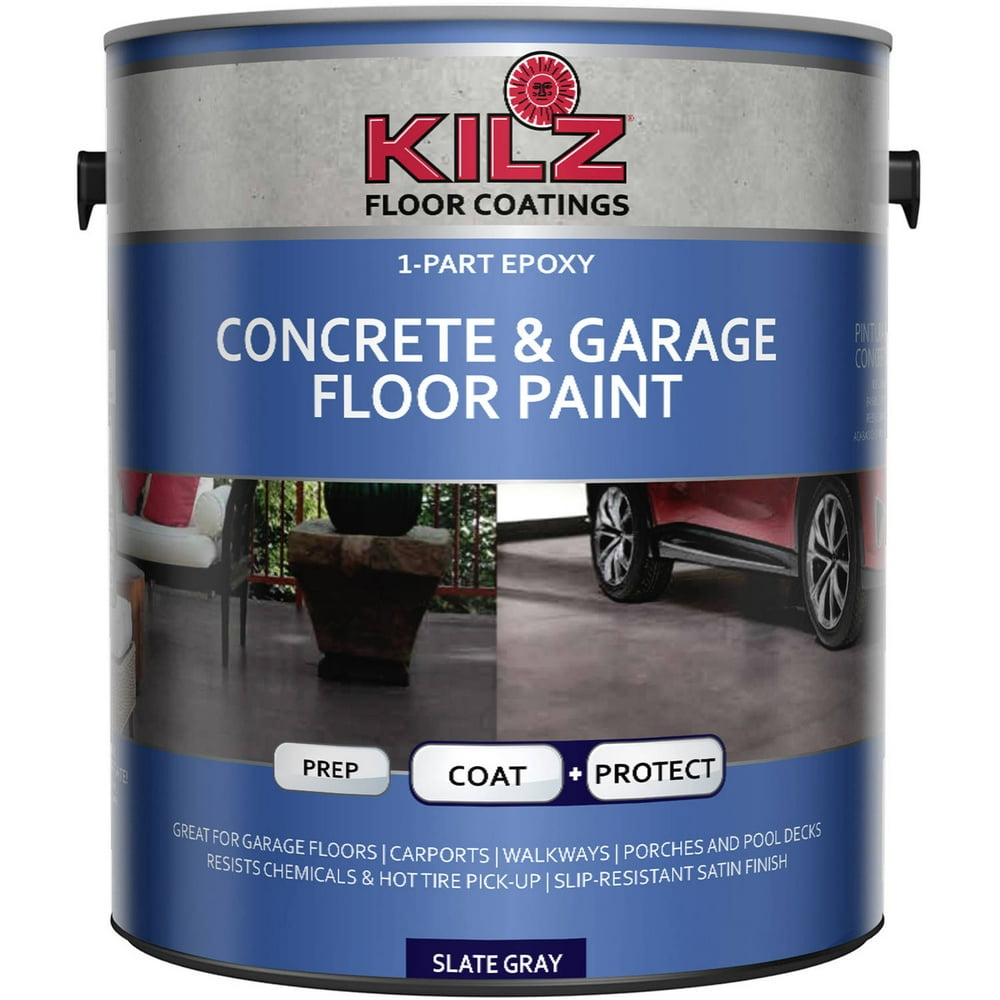
Choosing the Right Paint
Choosing the right paint for your garage floor is crucial to achieving the desired results. The type of paint you select will depend on factors such as the level of traffic, exposure to chemicals, and aesthetic preferences. Understanding the different options available can help you make an informed decision.
Epoxy paint is a popular choice for its durability and resistance to chemicals, stains, and abrasion. It is ideal for high-traffic areas and garages used for automotive work. Epoxy paint is available in various colors and finishes, and can be customized with decorative flakes or metallic pigments.
Acrylic paint is another option known for its ease of application and quick drying time. It is suitable for light to moderate traffic areas and offers decent durability. Acrylic paint is available in a wide range of colors and finishes, making it a versatile choice for homeowners looking for an easy-to-apply solution.
Latex paint is a budget-friendly option that is easy to apply and clean up. It is suitable for light traffic areas and provides a smooth, attractive finish. Latex paint is available in various colors and can be enhanced with anti-slip additives for improved safety.
Urethane and polyurethane paints are high-performance options known for their exceptional durability and resistance to chemicals, abrasion, and UV rays. These paints are suitable for both residential and commercial applications, offering long-lasting protection and a glossy finish.
When choosing the right paint, consider factors such as the level of traffic, exposure to chemicals, and desired aesthetic. It is also important to choose a paint that is low in VOCs to reduce environmental impact and improve indoor air quality.
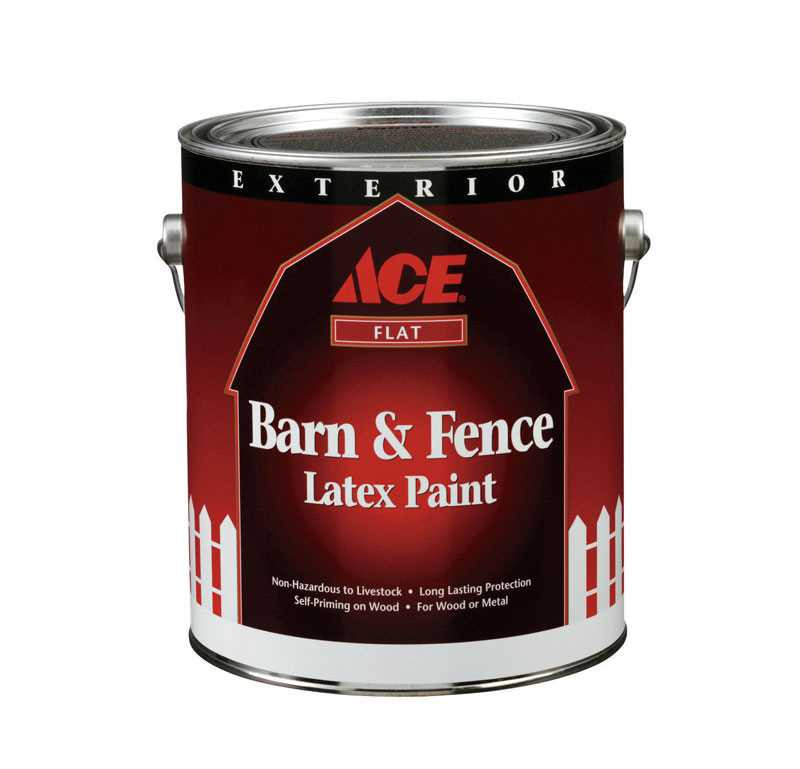
Application Techniques
Applying garage floor paint requires careful preparation and attention to detail to ensure a smooth, durable finish. The application process may vary depending on the type of paint used, but the general steps remain consistent. Proper technique and tools are essential for achieving professional results.
Begin by thoroughly mixing the paint according to the manufacturer’s instructions. This ensures that the color and consistency are uniform. For two-part systems like epoxy, mix the resin and hardener thoroughly to activate the chemical reaction that creates a durable finish.
Use a high-quality brush or roller to apply the paint. Start by cutting in the edges of the floor with a brush, then use a roller to cover the larger areas. Apply the paint in thin, even coats, working in small sections to ensure consistent coverage. Avoid applying too much paint at once, as this can result in uneven drying and a less durable finish.
For larger areas or more complex designs, consider using a paint sprayer. Sprayers can provide a smooth, even finish and reduce the time required for application. However, they require more preparation and cleanup, and it is important to follow the manufacturer’s instructions for use and maintenance.
Allow each coat of paint to dry completely before applying additional coats. This ensures that the paint bonds properly to the surface and creates a durable finish. The drying time will vary depending on the type of paint and environmental conditions, so be sure to follow the manufacturer’s recommendations.
For epoxy and urethane paints, a second or third coat may be necessary for optimal durability and appearance. Follow the same application techniques for each coat, ensuring that the previous coat is fully cured before applying the next.

Curing and Drying
Curing and drying are critical steps in the garage floor painting process. Proper curing ensures that the paint bonds fully to the concrete, creating a durable and long-lasting finish. The curing and drying times will vary depending on the type of paint used and environmental conditions.
After applying the final coat of paint, it is important to allow sufficient time for the paint to cure. Epoxy and urethane paints, in particular, require longer curing times compared to acrylic or latex paints. The curing process involves a chemical reaction that creates a hard, resilient surface.
During the curing process, it is important to avoid any traffic or use of the garage. This includes foot traffic, vehicles, and any heavy equipment. Any disturbance to the curing paint can result in a compromised finish, reducing its durability and appearance.
The ideal curing environment is one with stable temperature and humidity levels. Extreme temperatures or high humidity can affect the curing process, leading to longer drying times or an uneven finish. Follow the manufacturer’s recommendations for optimal curing conditions and make any necessary adjustments to your garage environment.
In addition to temperature and humidity, adequate ventilation is important during the curing process. Proper airflow helps to dissipate any fumes and ensures that the paint cures evenly. Open windows and use fans to improve ventilation, but avoid creating strong drafts that could disturb the curing paint.
Once the paint is fully cured, it is important to test the surface before using the garage. Lightly touch the surface to ensure that it is dry and hard. If there are any soft or sticky areas, allow additional curing time. Rushing the curing process can result in a less durable finish.
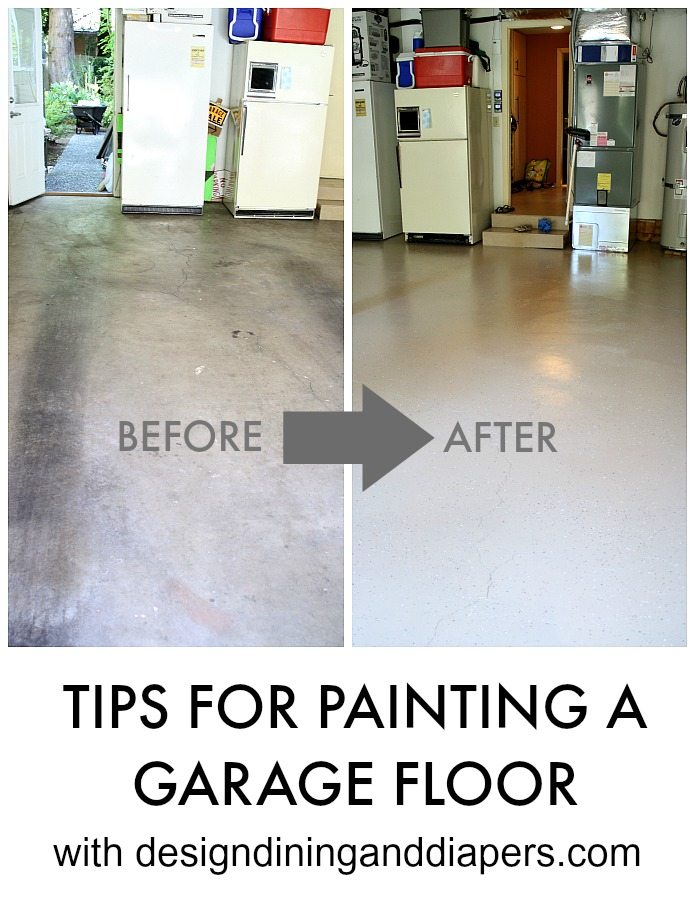
Maintenance Tips
Maintaining a painted garage floor is essential for preserving its appearance and durability. Regular cleaning and proper care can help extend the life of the paint and keep the garage looking its best. Here are some maintenance tips to help you care for your painted garage floor.
Regularly sweep or vacuum the floor to remove dirt, dust, and debris. This prevents particles from scratching the surface and reduces the buildup of dirt. Use a soft-bristle broom or a vacuum with a hard floor attachment to avoid damaging the paint.
For routine cleaning, mop the floor with a mild detergent and water. Avoid using harsh chemicals or abrasive cleaners, as these can damage the paint and reduce its longevity. Rinse the floor thoroughly with clean water to remove any soap residue, and allow it to dry completely.
Address spills and stains promptly to prevent them from penetrating the paint and causing long-term damage. Use a clean cloth or paper towel to blot up spills, then clean the area with a mild detergent and water. For stubborn stains, use a soft brush or sponge to gently scrub the area.
Inspect the floor regularly for any signs of wear or damage. Look for chips, cracks, or areas where the paint may be peeling or lifting. Address any issues promptly to prevent further damage. Small chips and scratches can often be repaired with touch-up paint, while more significant damage may require professional repair.
Consider applying a clear protective topcoat to the painted floor to enhance its durability and resistance to wear and tear. A topcoat can provide an additional layer of protection against stains, chemicals, and abrasions, helping to extend the life of the paint.
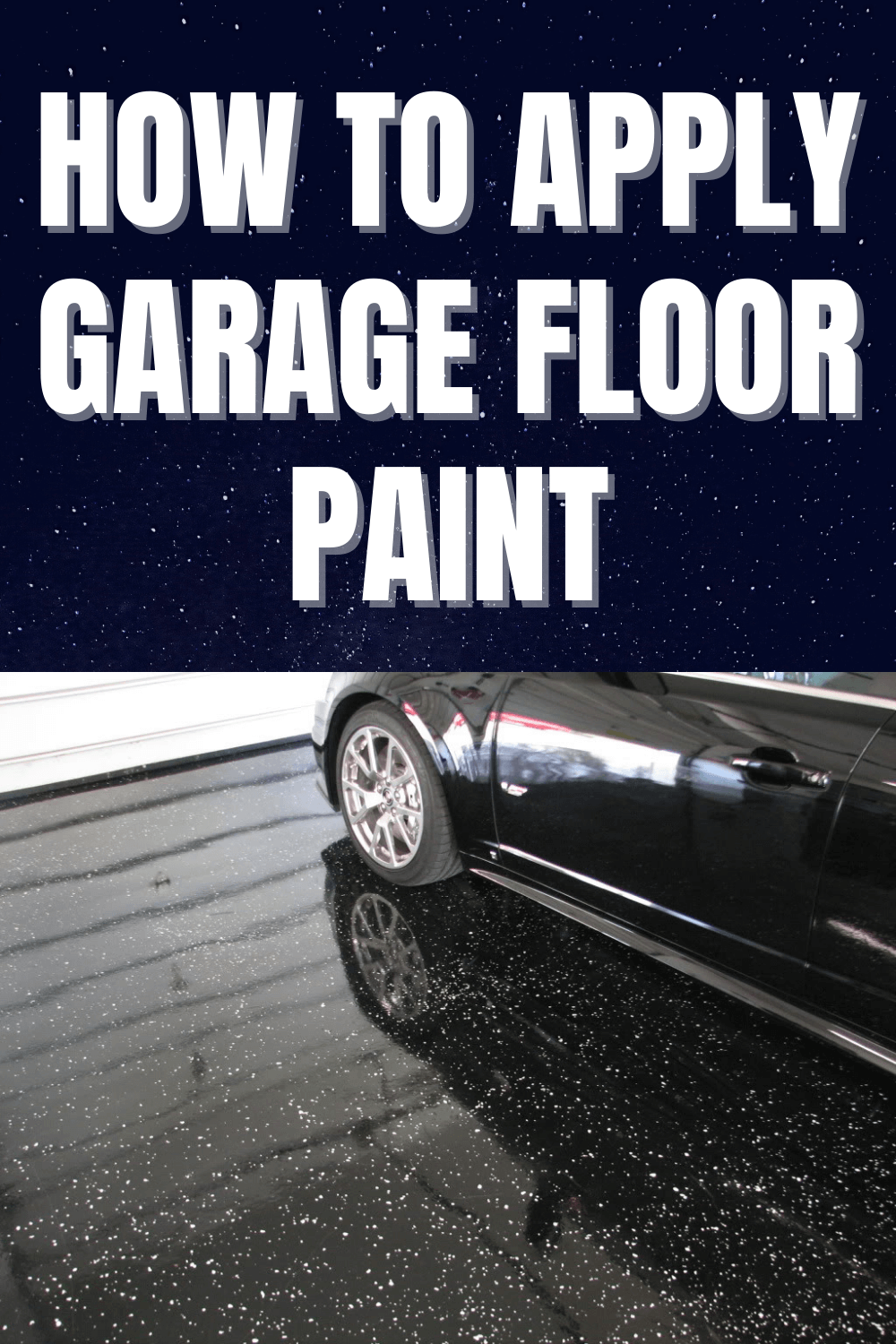
Professional vs. DIY Application
When it comes to painting your garage floor, you may wonder whether to hire a professional or tackle the project yourself. Both options have their advantages and disadvantages, and the best choice depends on factors such as your budget, skill level, and the complexity of the project.
One of the main advantages of hiring a professional is the quality of the results. Professional painters have the experience, tools, and expertise to achieve a smooth, durable finish. They can also handle complex application techniques, such as using sprayers or applying multiple coats of epoxy or urethane paint.
Hiring a professional can also save time and effort. The preparation and application process for garage floor paint can be time-consuming and labor-intensive. A professional can complete the project more quickly and efficiently, allowing you to enjoy your newly painted garage floor sooner.
However, hiring a professional can be more expensive than a DIY project. The cost of labor and materials can add up, especially for high-performance paints like epoxy or urethane. It is important to get quotes from multiple contractors and compare their prices and services before making a decision.
On the other hand, a DIY project can be more cost-effective and rewarding. With the right tools and preparation, you can achieve professional-looking results at a fraction of the cost. DIY painting also allows you to take full control of the project, from choosing the paint and colors to applying the finish.
Before starting a DIY project, it is important to assess your skill level and comfort with the application process. Some paints, such as epoxy and urethane, require precise mixing and application techniques. Make sure to follow the manufacturer’s instructions carefully and take your time to achieve the best results.

Related Posts:

